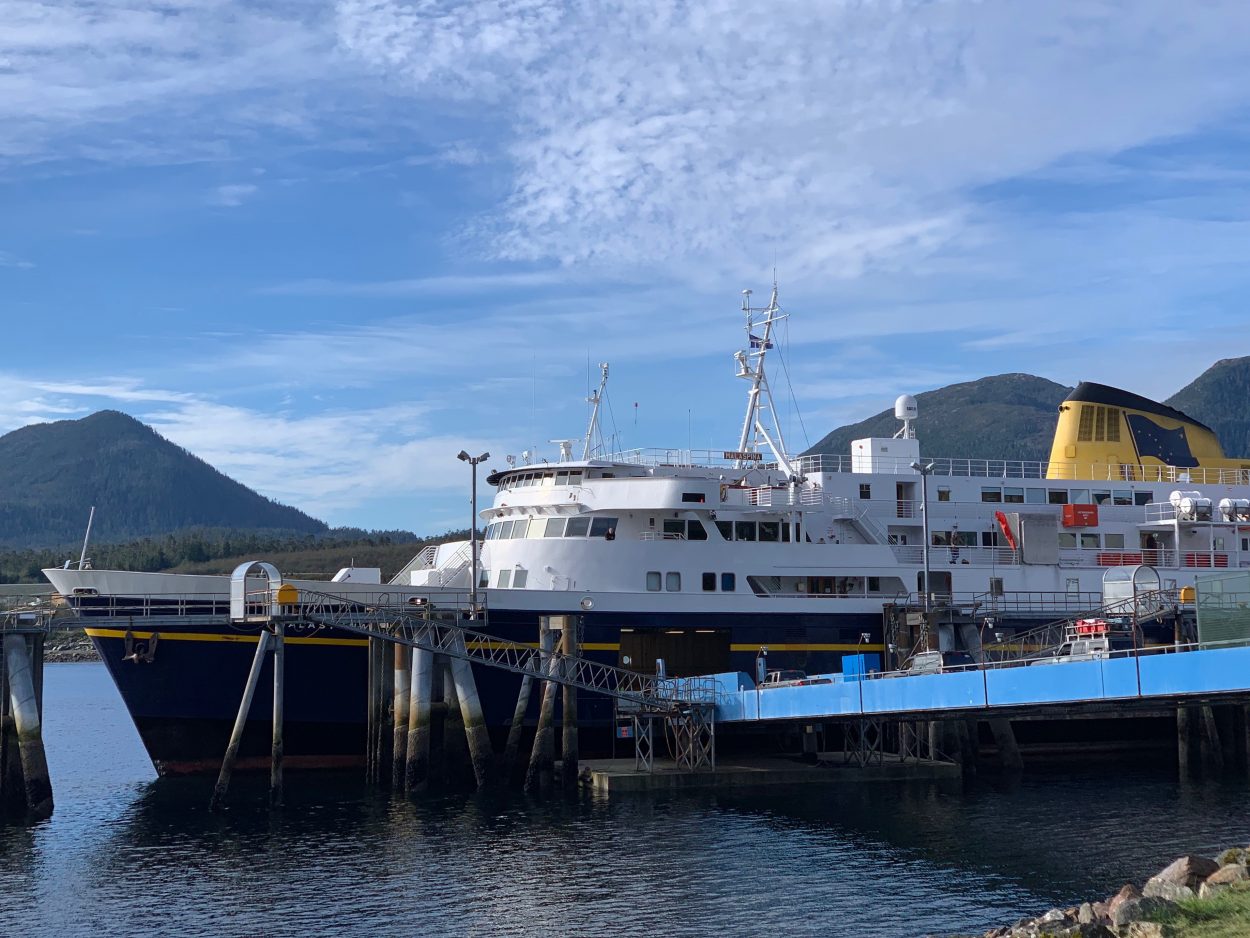
Basketball has long been Southeast Alaska’s favorite high school sport, but cuts to Alaska’s state ferry system have made it harder for teams to travel.
I grew up in Texas. In the nation’s second-largest state, every small town’s high school football team is its pride and joy.
But there’s another sport that dominates the coastal rainforest of Southeast Alaska.
“Pretty much every school in Southeast has a basketball program,” said Jaime Cabral. He’s activities director at Petersburg High School.
It’s an indoor sport, so unlike baseball or football, basketball teams aren’t at the mercy of the weather.
But Southeast’s geography makes travel difficult.
“Everyone’s pretty used to the yellow bus where you can go on a Wednesday and come back, and you’re back home Wednesday evening,” Cabral said.
But here, it’s more complicated. The yellow school buses don’t sail up and down the Inside Passage. So there are basically two choices. A ferry ride or a more expensive flight.
Cabral says for years, the Alaska Marine Highway System has made it easy and cheap to get to other towns.
“In years past, we were able to get to Ketchikan very simply leaving, you know, on a Friday and then coming home on a Sunday and missing minimal school,” he said.
But last year, the state government cut more than $43 million from the ferry budget. That’s meant fewer winter sailings during basketball season.
“With the cutbacks what we’re looking at is,” he said, “we’re flying a lot more and taking a lot less participants just because of the increase in costs.”
Because flying is, of course, more expensive. And that could take its toll next year.
“I can definitely see us in the future scheduling fewer games,” he said.
But even with plenty of games on the schedule this year, Cabral says taking fewer students isn’t ideal.
“It will have the trickle-down effect — you get less games for younger kids,” he said.
And that could disadvantage the basketball program for years to come. Troy Thain is athletic director at Craig High School on Prince of Wales Island.
“You want to be able to send your freshmen and sophomores — the JV group — so they can get the competition they need so you could have strong varsity programs,” Thain said.
He says in-game experience is critical.
“The more games you can get those kids, obviously, the stronger they’re going to be in those later years,” Thain said.
So it’s bad news when a reduced ferry schedule means fewer students can go get that real-game experience. But like his colleague in Petersburg, Thain says Craig hasn’t had to reduce its varsity schedule.
Folks in Angoon haven’t been so lucky.
“Already, we’ve lost a series of home games because the visiting school simply couldn’t afford to fly,” said Ron Gleason. He’s Angoon High School’s principal and activities director.
“Losing home games is a significant blow to the community,” he said.
And when the team does get to play away games, Gleason says they, too, are taking fewer students. But that’s not Gleason’s biggest concern.
“The sports programs are a vital part. But they pale in comparison to our inability to get food for our lunch programs, food for the community, for our only store, medical services,” he said.
The 500-person Admiralty Island community lost ferry service in November after the state balked at the ferry Leconte’s repair bill that was $4 million more than budgeted.
The ferry Tazlina has filled some of the service gaps this winter. But soon it will be out of service for modifications.
There are five runs scheduled in March. State transportation officials say those are to ensure there’s ferry transportation for two basketball tournaments in Juneau.
And the cuts to state ferries affect students’ cultural education as well. Cabral, Petersburg’s athletic director, says it’s important for the students to know their neighbors.
“As part of their education, I think it’s huge,” Cabral said. “Our kids rarely get out of their community.”
So when he’s in Ketchikan, Cabral likes to take the kids to see the Coast Guard station, for example, or the shipyard. Seeing other towns, he says, helps tie the region together.
“Every chance we go somewhere we try to find something that’s important to that community as well. So the connections that they create in Southeast is huge for Southeast as a cultural piece,” he said.
But these days, fewer students are getting that opportunity.
This story has been updated to correct an error. State ferries’ five March port calls in Angoon are intended to ensure adequate transportation for two basketball tournaments in Juneau, not one as previously reported.





